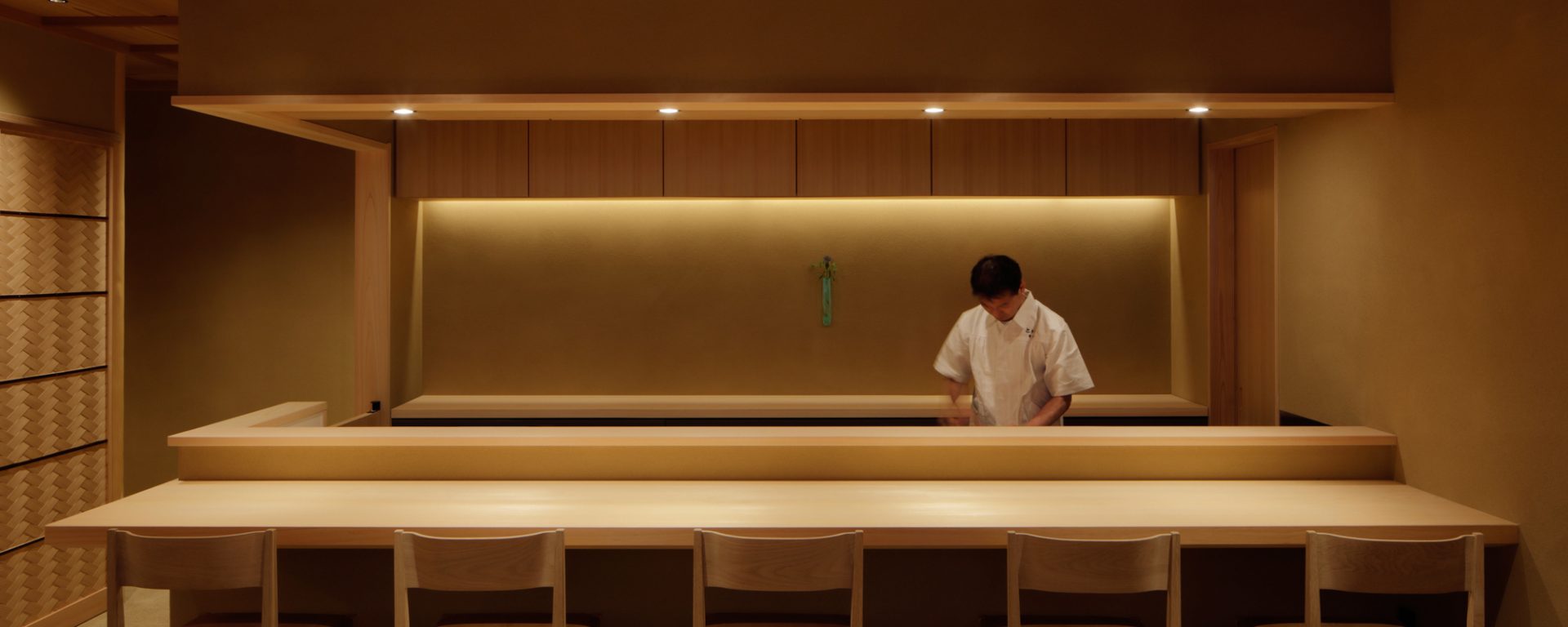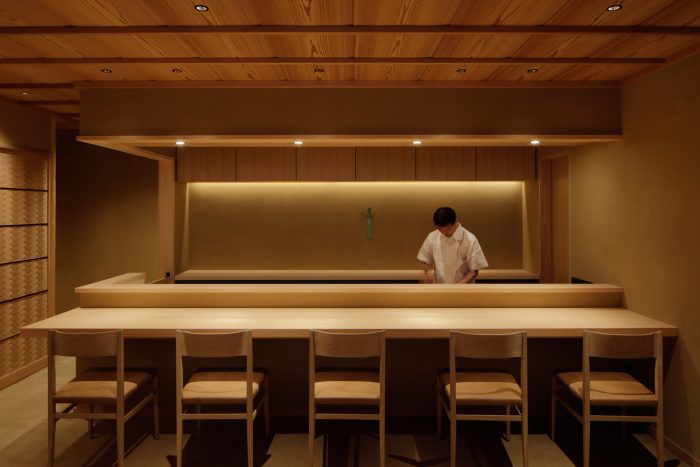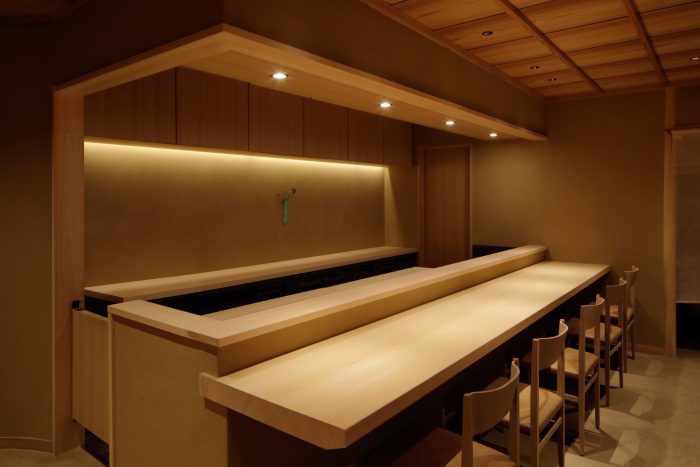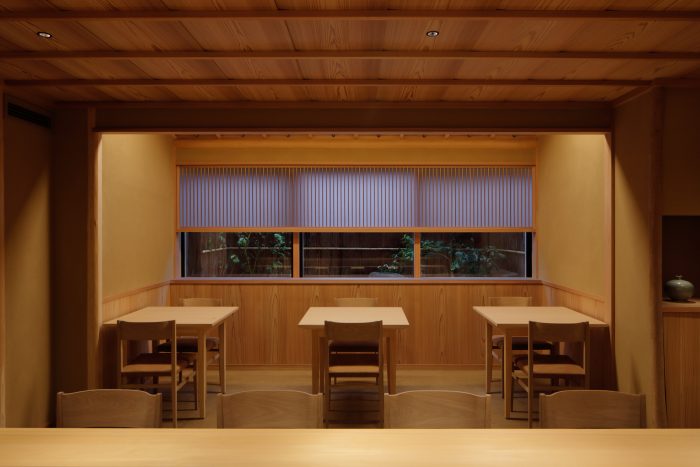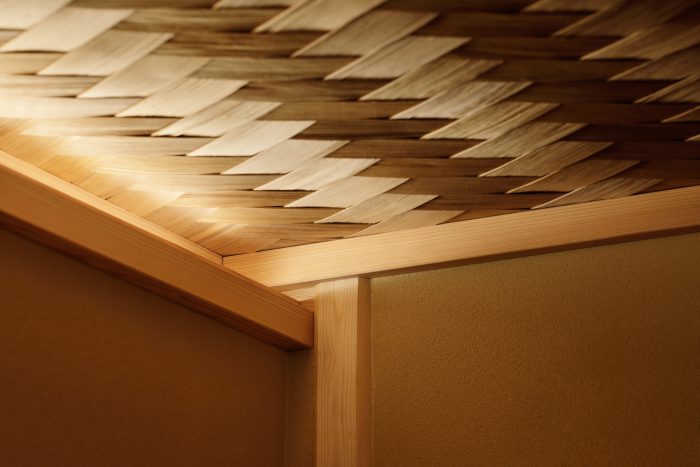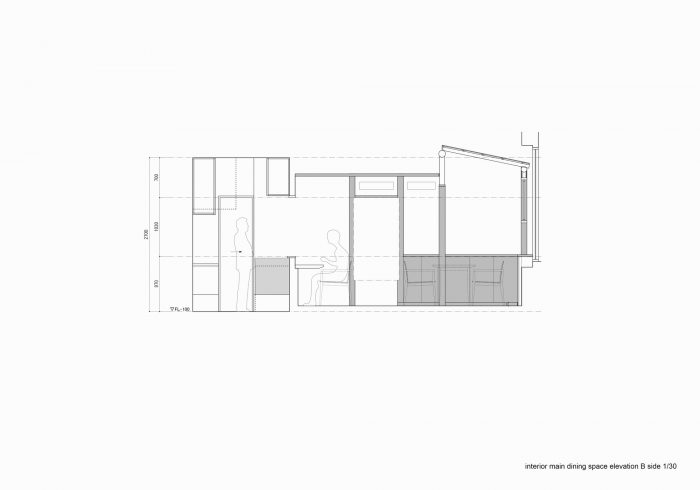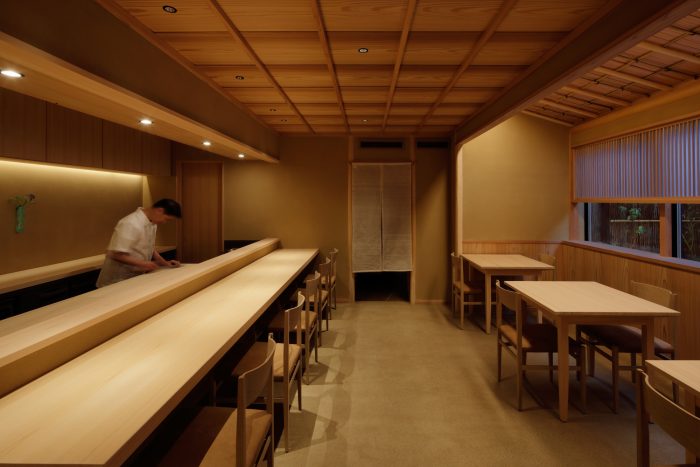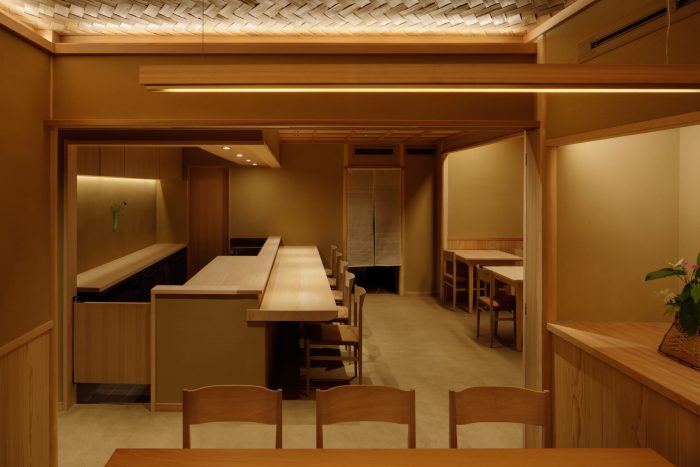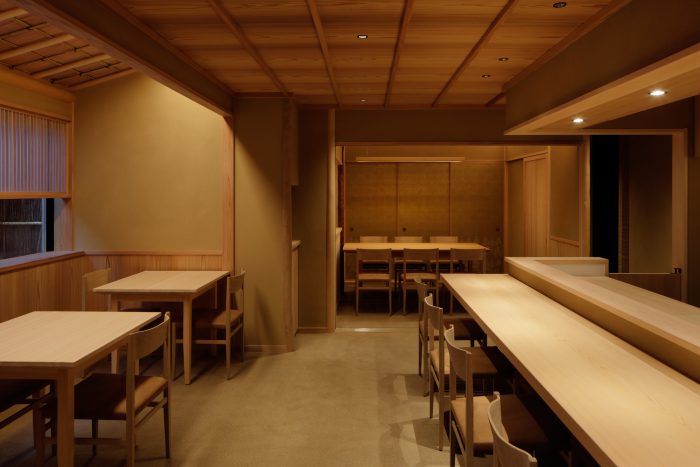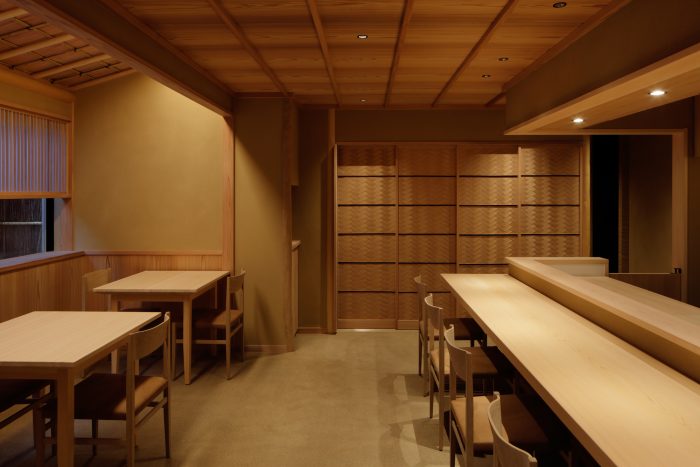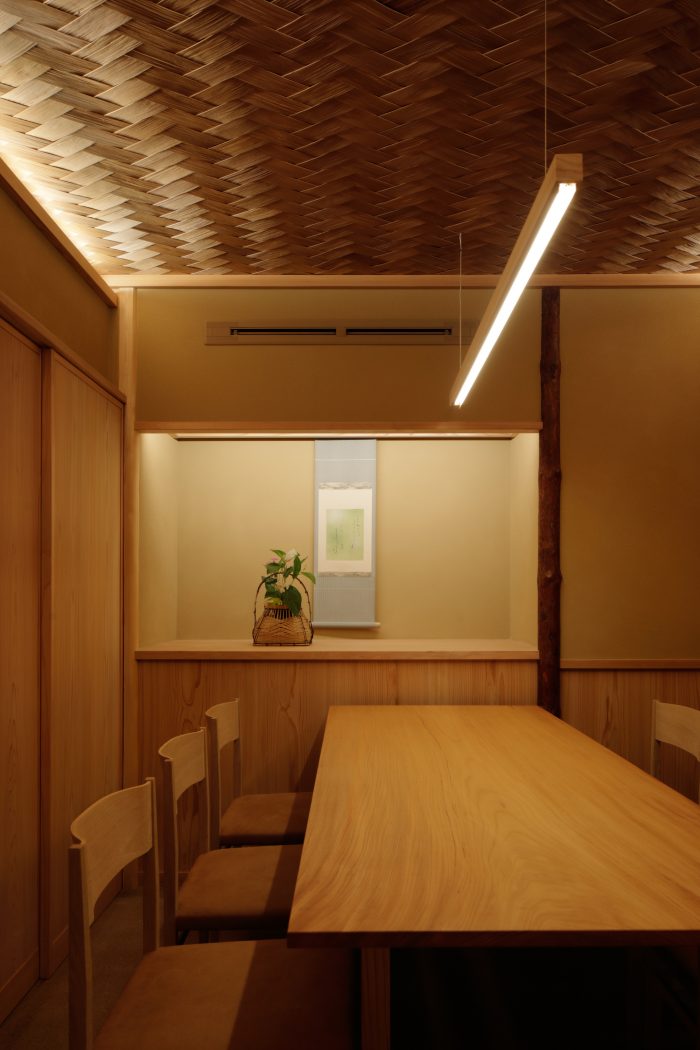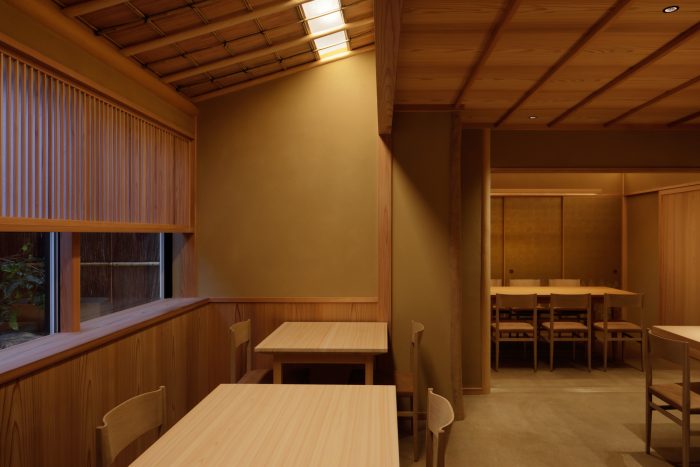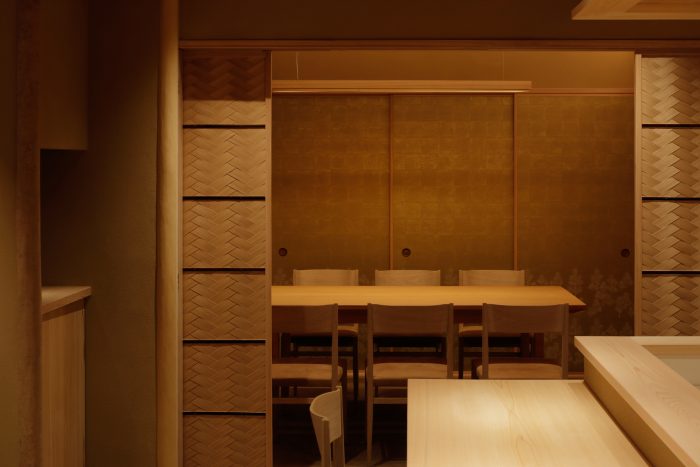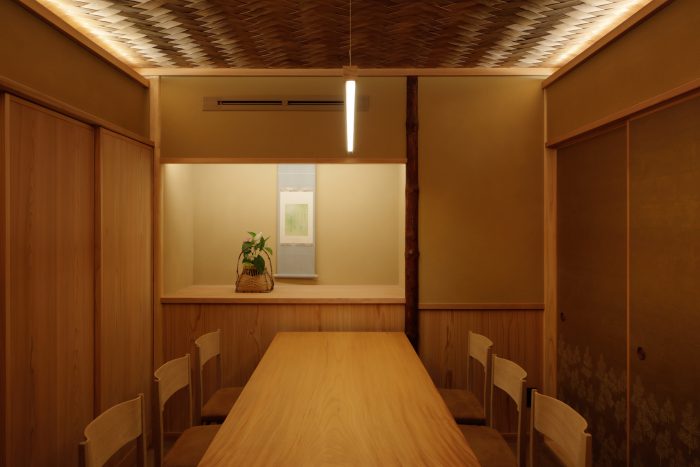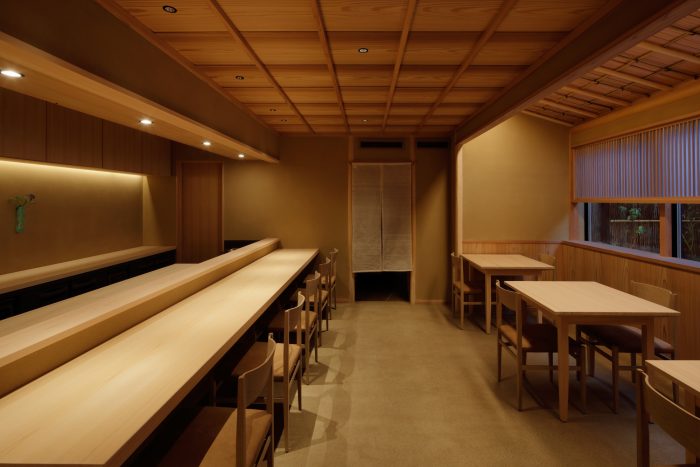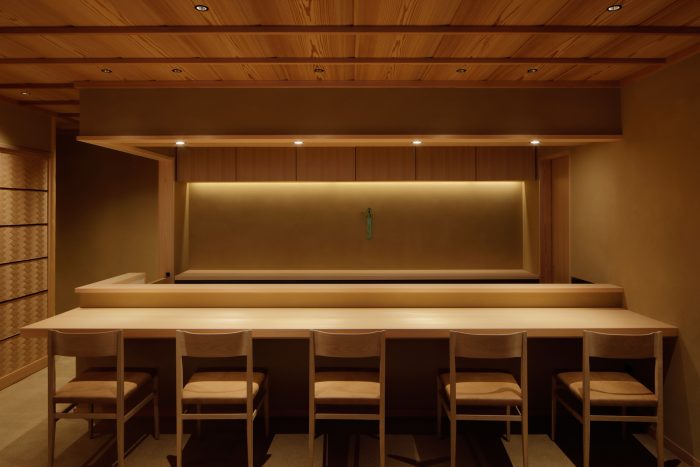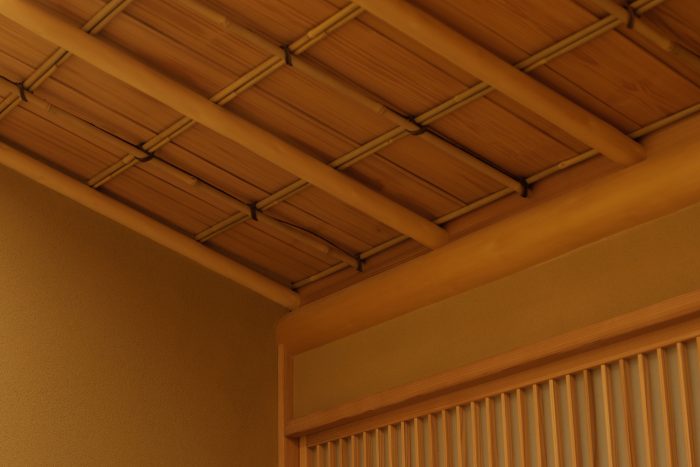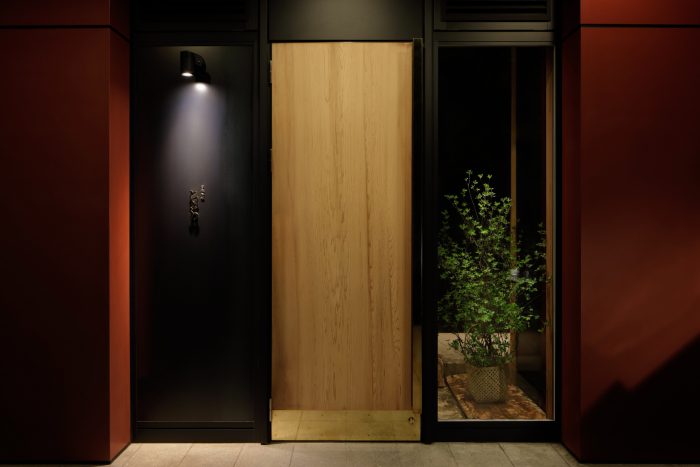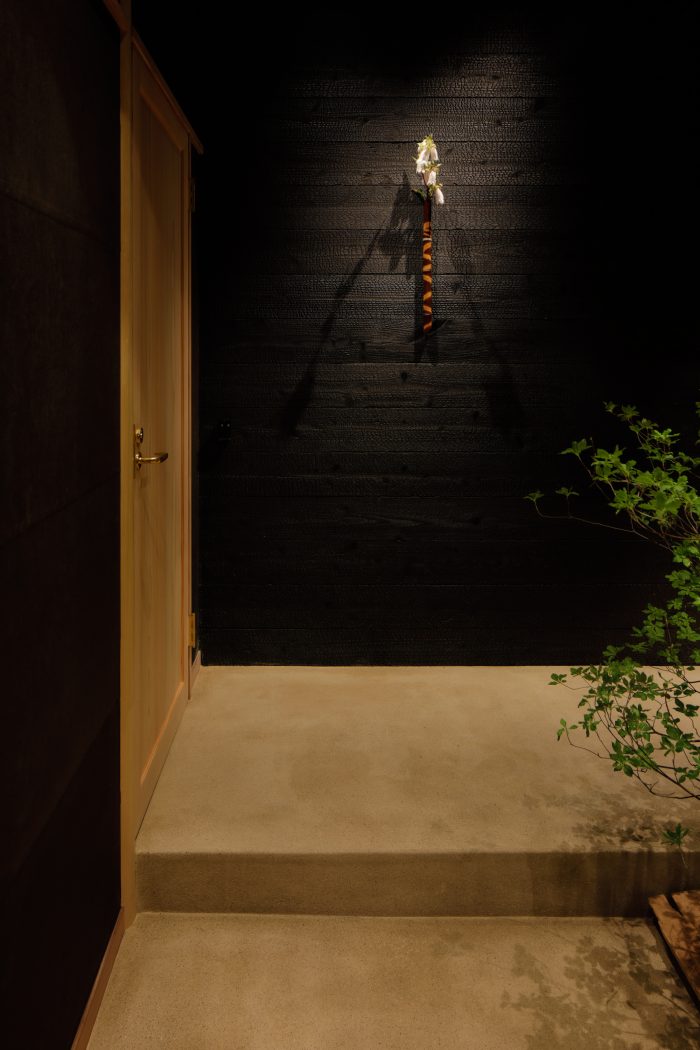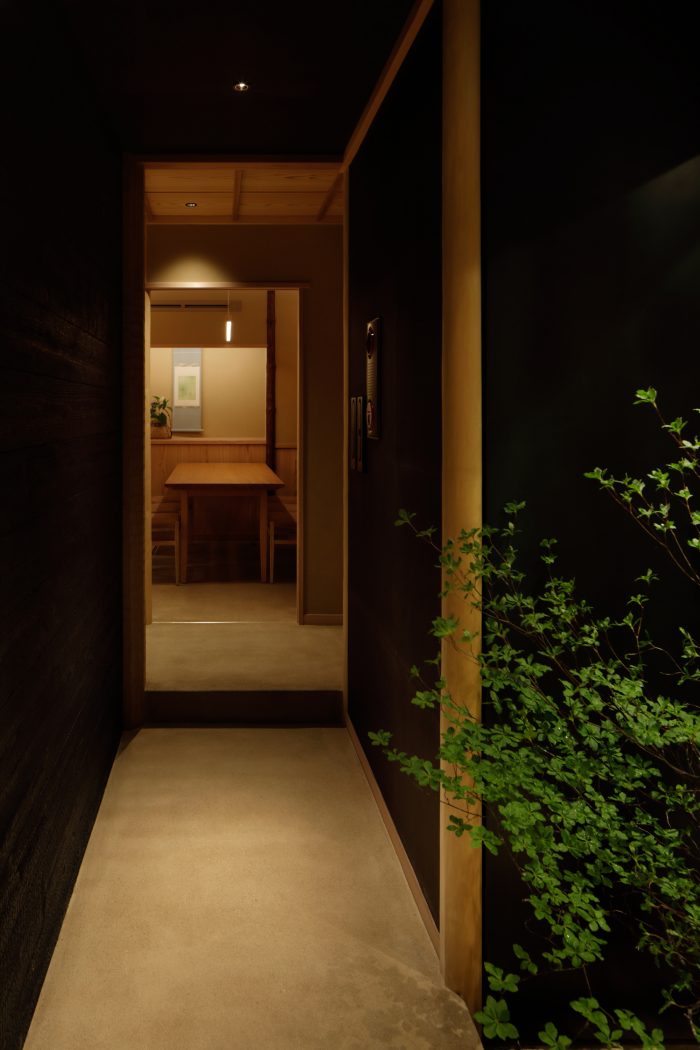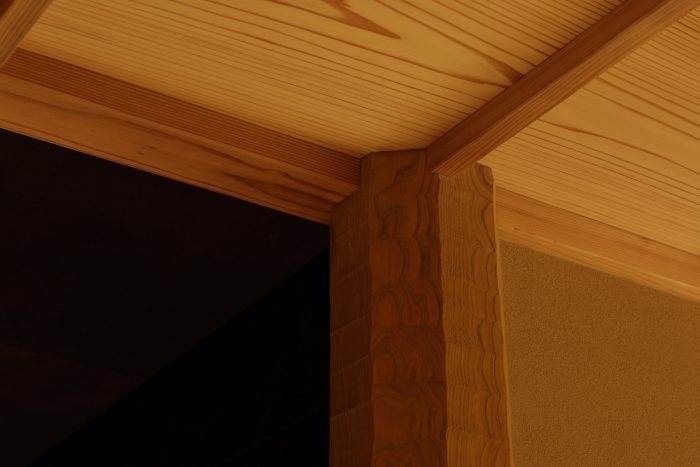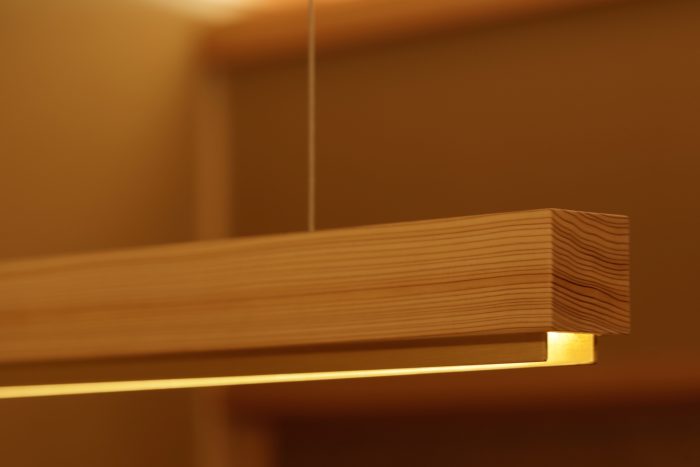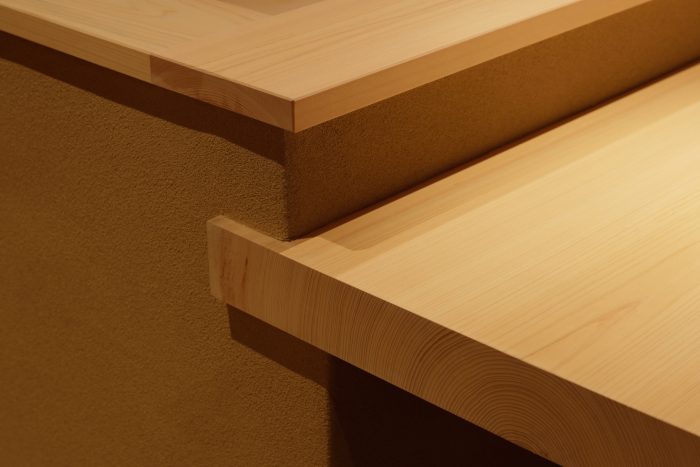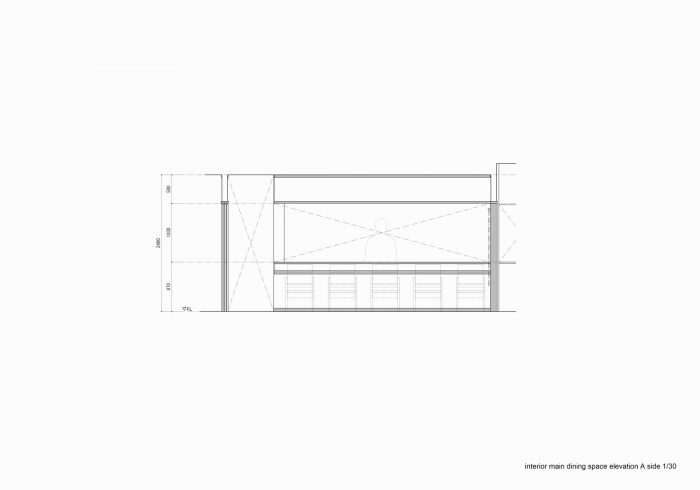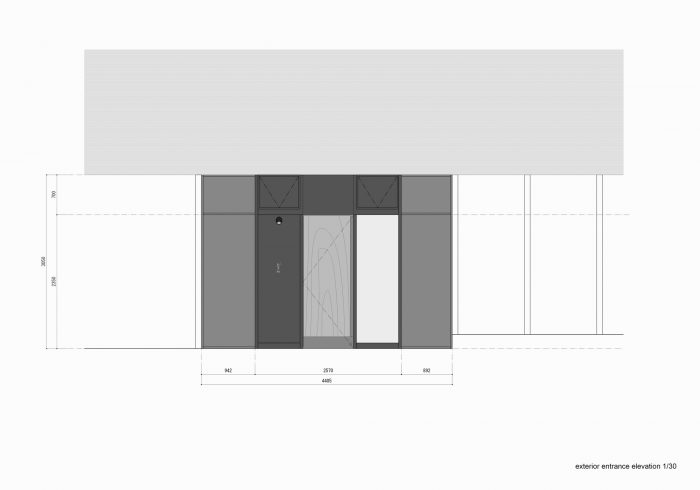本项目是由一位在银座经营了20年左右的日本料理店的厨师重新开的新店。室内设计为寿屋风格,以体现厨师个人对茶道的喜爱。整个区域分为入口、包间、柜台、餐桌区。
This project is a new store reopened by a chef who has been operating a Japanese restaurant in Ginza for about 20 years. The interior design is a Sukiya style to reflect the chef’s personal fondness of tea ceremonies. The entire area is divided into an entrance, a private room, a counter, a table area.
根据日本传统茶道室的美学,在设计和材料的选择上,空间性质有所不同。外立面的门由350年的单片桐岛雪松制成,配以黄铜框架,这种设计很适合代表餐厅的设计。对于从入口到用餐区的走向,在入口空间中,用烧过的雪松和染黑的手工日本纸的组合来缩小光线,与黑色锻铁板的质感形成对比。
The design and materials were selected to differ in the nature of the space, based on the aesthetics of a traditional Japanese tea ceremony room. The door of the façade is made from a 350 year old single piece of Kirishima cedar with a brass frame, a design fitting to represent the design of the restaurant. For the approach from the entrance to the dining area, the light is narrowed in the entrance space with a combination of burned cedar and black-dyed handmade Japanese paper to contrast the textures of the black wrought iron plate.
穿过幽暗的走廊后,可以看到一间包房,包房里有一根栗木大柱子。包房内,天花板采用柳条饰面设计,间接照明,其上覆盖着金色油漆图案的松木印花屏风门。红色的松木地梁与日本柏木的底板相结合,与实木榉木制成的桌子相得益彰。台座则采用宽度为650mm的吉野柏木,以利落的边缘打造简洁的细节。柜台和后面的固定装置也是用吉野柏木制作的。木板和木条的天花板采用了吉野柏木。
After passing through the dark corridor, a private room is visible with a large chestnut wood column. In the private room, the ceiling is designed with wickerwork finish with indirect lighting which is covered with a gold paint pattern with a pine printed screen door. The red pine floor beam is combined with the base plate of Japanese cypress to complement the table made of a solid piece of zelkova wood. For the counter seats, Yoshino cypress wood with a width of 650 mm was used to create clean details with sharp edges. The counter and the fixtures on the back are also made from Yoshino cypress. The board and batten ceiling is finished with Yoshino cedar.
吉野柏的桌椅用北京都的小日本雪松原木、小竹片、凹槽瓦片吊顶板和用山茶原木设计的壁龛来点缀。外园以苔藓、秋叶、山茶花为装饰。调整高度,从窗外就能看到地面上的落叶和山茶花。代表着厨师如何选择特定的食材,材料来自于传统茶道的设计,融入了Sukiya的技术和表现方法。随着设计年龄的增长,空间成功地代表了对茶道感兴趣的厨师的身份。
The Yoshino cypress table seats are accented with small Japanese cedar logs from North Kyoto, small bamboo pieces, notched shingle ceiling boards, and niche designed with camellia logs. The outer garden is decorated with moss, autumn leaves and camellia. The height is adjusted so that the fallen leaves and camellia flowers can be seen on the ground from the window. Representative of how the chef selects specific ingredients for a dish, materials were derived from a design of a traditional tea ceremony which incorporated Sukiya techniques and expression methods. As the design will develop with age, the space successfully represent the identity of the chef with an interest in tea ceremonies.
建筑师: Fumihiko Sano Studio
面积: 58 m²
年份:2020年
摄影:Daisuke Shima
制造商:3M, DINAONE, FUJIKAWA KENZAI KOGYO, Kyoei Wood, Miyazaki Chair Manufacturing, Tokyo Fukuyuki
建筑师:Fumihiko Sano
承包商:Shibutani Group Company Limited
城市:Minato City
国家:日本
Architects: Fumihiko Sano Studio
Area: 58 m²
Year: 2020
Photographs: Daisuke Shima
Manufacturers: 3M, DINAONE, FUJIKAWA KENZAI KOGYO, Kyoei Wood, Miyazaki Chair Manufacturing, Tokyo Fukuyuki
Architect In Charge:Fumihiko Sano
Contractor:Shibutani Group Company Limited
City:Minato City
Country:Japan

